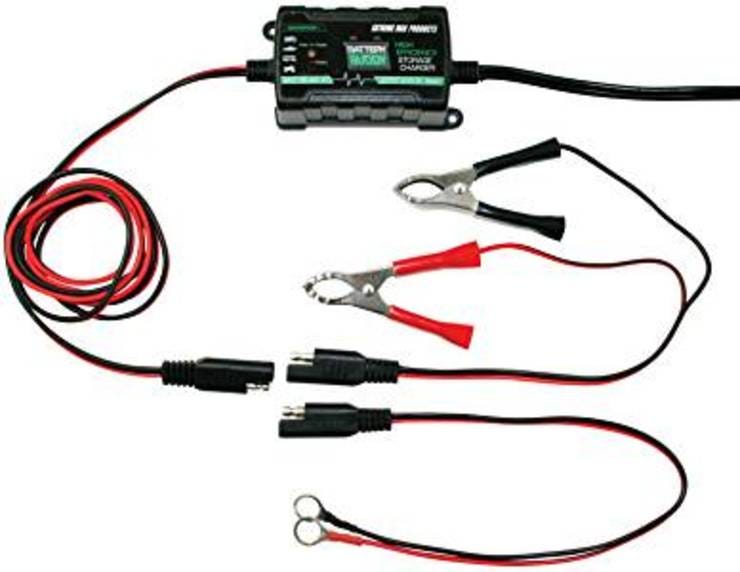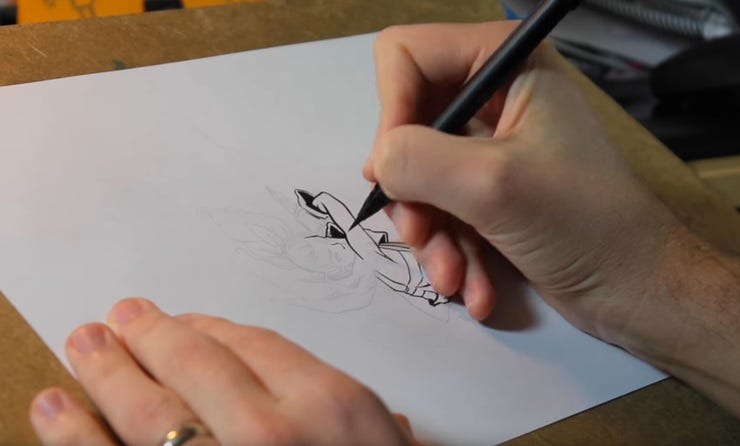Gareth's Tips, Tools, and Shop Tales - Issue #25
Improving Cheap Brushes
On a Tested.com primer video on paint brushes, Bill Doran shares a tip I'd never heard before. We all know how great cheap craft store brushes can be for applying glues, doing weathering and faux finishes, drybrushing, and quick n' dirty paint jobs. I bought a giant bag of them, of all sizes and shapes, at Michael's years ago for $7. But they have a nasty habit of shedding their bristles. That's because, unlike their more high-quality counterparts, cheap brushes are not glued or sewn, the bristles are simply crimped into place. So, to help keep the bristles of cheap brushes in place, Bill runs a bead of CA glue along the base of their bristles. Neat!
Toys!
In one of Donald Bell's Maker Update episodes last year, he recommended one of these Battery Buddy chargers for recharging sealed lead-acid batteries (such as the ones found in Uninterruptible Power Supplies (UPS), the type of battery back-up power brick you likely have sitting under your desk). I bought one and have been using it to keep all of my UPS's charged. I have six such battery back-ups in my house. Replacement batteries are around $30 each, so this $20 charger paid for itself immediately.
YOU Rule!
In my book, Tips and Tales from the Workshop, I include a tip about knowing the measurements of different parts of your hand, arms, and feet so that you can use them in a pinch for rough measuring when no ruler is handy. This week, I heard of a worthwhile addition. Dump measured amounts (e.g. teaspoon, tablespoon) of something in the palm of your hand to get a rough idea of what those quantities look like. For anything that only requires rough measuring, this will give you an adequate approximation.
Working with the Limits of Your Body
I've recently gone down the rabbit hole for an indie tabletop miniatures game, called Relicblade. Besides being an amazingly cool fantasy skirmish wargame, Relicblade is also special because it is primarily the vision and labors of one person, artist and game designer Sean Sutter. Sean pretty much does everything, from game design, art and illustration, design and digital sculpting of the miniatures, book design--all of it. And he documents much of his process on YouTube. In one of those videos, on conceptualizing and rendering his thief character for the game, he shares a very important concept that can apply to all sorts of making, but especially anything where hand and arm control are important (as in drawing). Sean says to think of your hand/arm as a machine, with mechanical capacities and limitations. Once you are mindful of these, you can work around/with them. In doing an activity, in Sean's case, drawing, you want to think about the optimal angles for confident control of your hard and to move the workpiece to conform to your limitations rather than trying to make your hand do things it doesn't naturally want to do. You can see in the above-linked video that, in drawing his thief image, Sean is constantly turning the paper to get the best, easiest angle.
Gluing with Paint?
My pal Andy Birkey was showing me how he was affixing small objects to a spoil board with a dab of hot glue to hold them in place for spray painting. This reminded me of an old miniature modeler's trick. For small, lightweight parts, you can actually use paint to "glue" the pieces to your "painting stick" for priming. Many modelers use home store paint stirring sticks to hold their minis in place for priming. To hold them in place, you just lay down a coat of primer on the spraying stick, press the model parts to it, and voila, your parts are secure enough for priming (and easy removal). For heavier parts, Andy's idea of a dab of hot glue (or CA) is far more secure. When the painting is done, he uses a razor knife to remove the parts.
Safety: Know Where Your Glasses and Flashlight Are
This might seem like a silly thing to include, but I think it's worth stating out loud. I woke up once in a house filled with thick, black smoke (a malfunctioning oil furnace). It was terrifying and shockingly disorienting. In the thick, choking haze, I couldn't even find the door out of my room. Ever since then, I have made a point of always keeping my glasses in the exact same spot on my night stand every night and a flashlight beside the bed where I can easily grab it. Know where your flashlights are located, always keep them there, and keep fresh batteries in them. And, if you wear glasses, keep them in the exact same spot where you can reach them whether you can see them or not. Trust me, this could be a life-saver.







